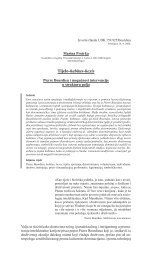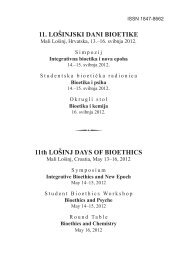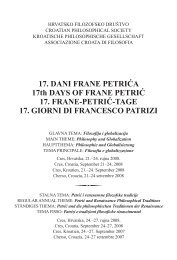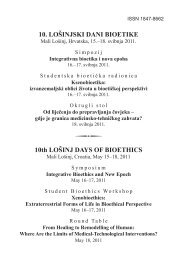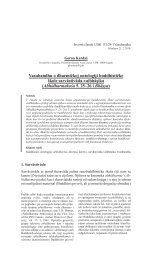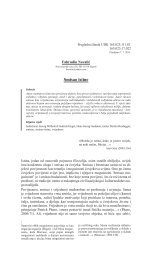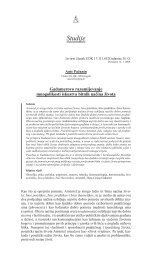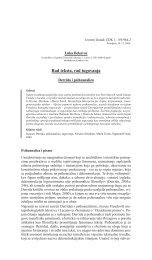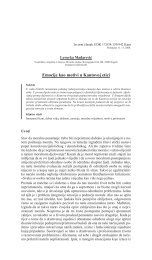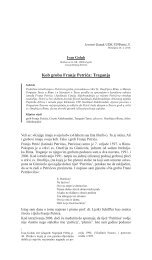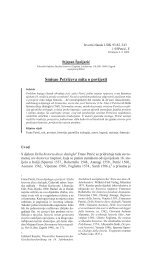Programska knjižica - Hrvatsko filozofsko društvo
Programska knjižica - Hrvatsko filozofsko društvo
Programska knjižica - Hrvatsko filozofsko društvo
You also want an ePaper? Increase the reach of your titles
YUMPU automatically turns print PDFs into web optimized ePapers that Google loves.
PETRIĆ’S ANTINOMY<br />
In book six of the fourth volume of his Discussiones peripateticae Petrić<br />
rejects Aristotle’s statement on the eternity of heaven. His rejection is not constructed<br />
on counterthesis, that is, the proof of the counterthesis, but on the<br />
criticism of Aristotle’s argumentation, i.e., refutation of Aristotle’s proof that<br />
heaven is eternal, because heaven itself holds no contrariety. That argumentation<br />
is immanent criticism, that is, Petrić proves that by Aristotle’s own theses<br />
it is not true that the heaven holds no contrariety. Contrariety in heaven Petrić<br />
proves on the basis of Artistotle’s thesis of the continuity of spheres that form<br />
spherically after one another. In such forming that which forms, Petrić asserts,<br />
is hard, while that which is formed is soft – both hard and soft, Petrić holds,<br />
are contrarieties.<br />
Petrić, however, is not satisfied with the proof that contrariety exists in<br />
heaven, which would suffice for his refutation of Aristotle’s thesis that heaven<br />
holds no contrariety. Based on the thesis of the mutual forming of spheres,<br />
Petrić proves that one and the same sphere may be described both as hard and<br />
soft depending on the position from which the forming of the spheres is observed.<br />
Should one start from the last sphere, then it is the hardest, the sphere<br />
of the Saturn that follows is softer, etc.; should one start from the sphericity of<br />
water on the Earth after which the sphericity of air, fire etc. is modelled, then<br />
water is the hardest and the first heavenly sphere the softest. These deductions<br />
Petrić calls ‘Aristotle’s monsters’, and we may call them ‘Petrić’s antinomy’.<br />
By using antinomy, Petrić has proved the following: If mutual and continuous<br />
forming of heavenly spheres is interpreted according to mutual forming<br />
of things in the world – in which we have to renounce the control of senses<br />
and formalise the relations of the mutual forming – then for one and the same<br />
sphere one may prove that in one sequence is the one that forms, the hard one,<br />
while in the inverse sequence is the one that is formed, i.e., the soft one. What<br />
might be considered proven by this antinomy is the inadequacy of the application<br />
of the paradigm of mutual forming (spherical or other) on the objects<br />
inaccessible to the senses (apart from sight).<br />
Key words: eternity of heaven, spherical form, continuity of spheres, contrariety,<br />
hard–soft, Petrić’s antinomy<br />
149



